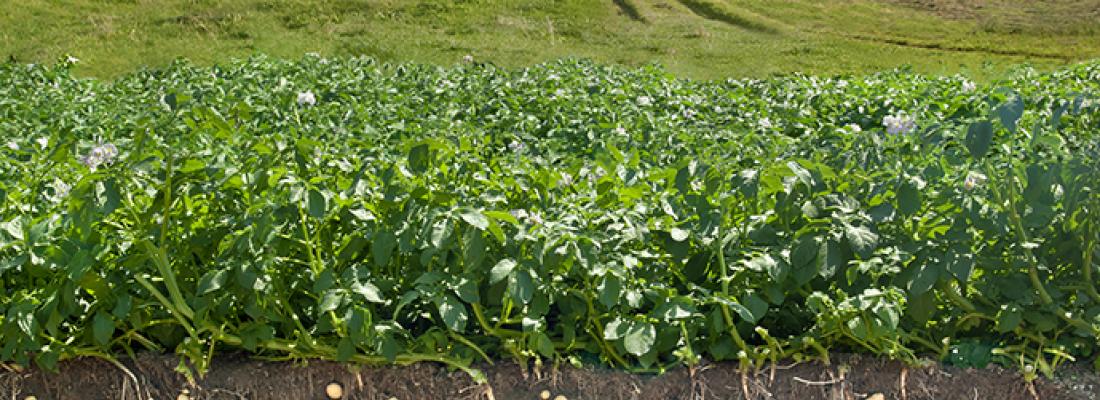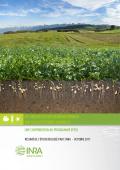Biodiversity Reading time 4 min
Assessing services provided by agricultural ecosystems to improve their management
Published on 24 October 2017

Agricultural ecosystems are one of the six components of the Evaluation française des écosystèmes et des services écosystémiques (EFESE), a nation-wide assessment of ecosystems and ecosystem services launched by the French environment ministry in 2012 to provide data on the current state and sustainable use of ecosystems (see boxed text 2). In 2014, the Minister of the Environment commissioned INRA to conduct the agricultural ecosystem component of the assessment. EcoServ (for ecosystem services), a research metaprogramme launched by INRA in 2013, also provided support for the study, which it will enrich and expand.
Seen as the totality of fields used for the production of agricultural biomass, the agricultural ecosystem is configured and managed by the farmer, who combines ecological processes and the use of external inputs in his or her farming practices. One major goal of ecosystem service assessments is to design production systems which make effective use of these services and, as a result, require little in terms of external inputs and satisfy societal challenges such as the preservation of biodiversity and reducing environmental impact.
Assessment of 14 ecosystem services
Using an international model of ecosystem services, experts defined 14 services as being particularly important to agricultural ecosystems. Assuming that every ecosystem service benefits someone, in the case of agricultural ecosystems a distinction is made between society, which benefits directly from services such as climate regulation (GHG reduction) and carbon storage; and farmers, who benefit directly from services such as the pollination and addition of mineral nitrogen to crops.
The study sought to quantify the extent to which each service was provided in biophysical terms, in the highest spatial resolution available, at the national level and taking into consideration the current state of ecosystems and agricultural practices. Taken together, the original results produced by the study constitute a system of information which can be enriched and used for future research.
Findings per service: the case of nitrogen and climate
A STICS crop model developed by INRA was used to assess the quantity of mineral nitrogen provided to the soil by the ecosystem, both via mineralisation and by root symbioses. A comparison of results from current systems and from complete mineral fertilisation systems shows that, in the case of the eight arable crops, 40 to 50% of a plant’s annual needs in inputs are provided by the ecosystem service (between 40 and 44% in 60% of cases). In all cases, results show that the current levels of mineral fertilisers used could be reduced.
To assess climate regulation, experts estimated the amount of carbon currently stored in the ecosystem under study (notably in soils and woody structures) and annual variations in this amount. On average, soils in arable farming systems in French agricultural ecosystems tend to store less carbon (-0.3 per 1,000 every year; in most cases between - 5‰ and + 4‰), but these results would differ had grasslands been included.
Toward multi-service approaches
The experts who conducted the study point out that a high-quality biophysical assessment of ecosystem services must be carried out prior to any economic assessment. This is tricky, and results obtained on a service-by-service basis are not cumulative, as each is based on a different initial point of departure.
Two approaches have been suggested for a multi-service assessment. The “service package” approach is based on statistical co-occurrences in levels of each service and identifies services which are provided at converging or opposing levels. However, this approach does not explain the causes of these correlations because it does not identify interactions between services. A complementary approach was therefore used to find common causes affecting several services. For example, it was found that beneficial organisms simultaneously affect three ecosystem services: pollination, weed seed regulation, and insect pest regulation.
Managing biodiversity with ecosystem services - but not only
Ecosystem services cannot be relied upon as the only tool with which to manage ecosystems; some – biodiversity – must be managed and preserved, despite providing little in the way of services, because it is emblematic. Furthermore, three approaches – ecosystem service assessment, knowledge of emblematic biodiversity, and a reduction in the impact of agricultural practices – must be applied conjointly in ecosystem management.
What next?
This study is based on arable crops, according to average crop systems currently in use and for which data is available. It could be extended to a wide variety of crop systems and crop practices, including organic farming and non-tilling farming methods, to establish agricultural systems which rely, to the highest degree possible, on ecosystem services, and require far less inputs as a result. Likewise, the current study is much more centred on plant-based (primary) production than on (secondary) livestock farming.
The original information system produced by the study will be used by the EcoServ metaprogramme to continue and enrich research, as several theses financed by this metaprogramme already do.
An internationally focused study
Following the Millennium Ecosystem Assessment and in response to the Convention on Biological Diversity, the European Union in 2011 adopted a strategy aimed at stamping out biodiversity loss by 2020. This “Biodiversity Strategy for 2020” is structured around six targets. Target five calls on Member States to map and assess the state of ecosystems and the ecosystem services they provide in their national territory, with support from the Commission. A working group was established in 2013 for this purpose: the Mapping and Assessment of Ecosystems and their Services (MAES), the first initiative of which was to provide support for the development of an analytic framework which Member States could use to harmonise the various assessments. The MAES programme used the CICES ecosystem service classification system.
Agricultural ecosystems are one of the six components of the Evaluation française des écosystèmes et des services écosystémiques (EFESE): urban, coastal, mountain, forest and wetland ecosystems were studied by other institutions. The EFESE assessment is a component of the MAES programme, itself part of IPBES, an intergovernmental platform on biodiversity and ecosystem services.

Services provided by agricultural ecosystems :
An INRA DEPE study
The study is carried out by a project team from INRA’s Delegation for Collective Scientific Expertise, Foresight and Advanced Studies – the DEPE – in accordance with operating principles established by INRA for collective scientific expertise, from which the study derives.
Some 40 experts and other scientific contributors, from a variety of institutions (INRA, CNRS, MNHN, higher education establishments, JRC), from complementary disciplines (e.g. ecology, agronomy, hydrology, zootechnics, economics) were asked to undertake the study, with data engineering in large part handled by teams at INRA, assisted by the Rural Development Observatory.
This team was steered by two scientific directors, who provided guidance and defined the scientific focus of the study.
